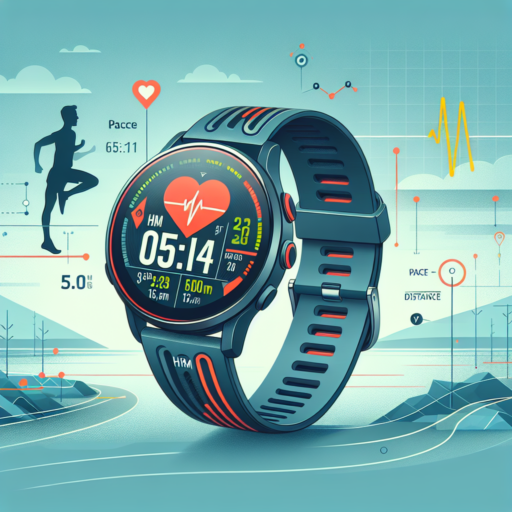What is a pulsometer in a watch?
A pulsometer in a watch is a specialized feature predominantly found in chronograph watches that allows the wearer to measure their heart rate quickly and without any need for external devices. Originating in the early 20th century, the pulsometer was initially designed for medical professionals to offer a practical way to gauge a patient’s heartbeat. However, over time, its appeal has broadened, making it a beloved feature among athletes, fitness enthusiasts, and anyone interested in monitoring their heart rate for health reasons.
The functionality of a pulsometer is relatively straightforward. It works by starting the chronograph function when the user begins to feel their pulse and stopping it after a specific number of beats, typically 15, 30, or 60. The watch dial is marked with a scale that corresponds to the number of beats counted, and when the chronograph is stopped, the second hand points to the heart rate value on this scale. This allows the user to read their heart rate directly off the watch face instantaneously.
Efficiency and Convenience stand out as the primary advantages of having a pulsometer in a watch. For individuals focused on cardiac health or improving their physical condition, having an on-the-go, easy-to-use tool to monitor heart rate can be invaluable. Moreover, the integration of a pulsometer into a wristwatch combines functionality with the elegance and style of traditional timepieces, making it a popular choice for both medical professionals and style-conscious consumers alike.
How do you read a pulsometer watch?
Reading a pulsometer watch is an intriguing skill that combines traditional timekeeping with a touch of medical utility. Initially designed for medical professionals, these watches allow for a fast and easy assessment of a patient’s heart rate. To effectively use a pulsometer watch, follow these straightforward steps.
The first thing to understand is the pulsometer scale typically found along the watch’s bezel or dial. This scale is calibrated, often for 15 or 30 pulses. Start by finding the patient’s pulse and then initiate the stopwatch function of your pulsometer watch. Count the beats until you reach the number your watch’s scale is calibrated for — usually 15 or 30. Once there, stop the stopwatch. The second hand of your watch will now be pointing to a number on the pulsometer scale, revealing the patient’s beats per minute (BPM).
It’s crucial to note that pulsometer watches offer an estimation rather than a precise measurement of heart rate. Various factors, including patient movement or an irregular heartbeat, can affect accuracy. Despite this, pulsometer watches remain a valuable tool for quick assessments in settings where traditional methods might not be readily available.
No se han encontrado productos.
How does a pulsometer work?
A pulsometer is a fascinating and incredibly useful tool, commonly used in medical and fitness applications to measure heart rate or pulse. Its working mechanism is relatively straightforward yet ingenious, allowing users to monitor their cardiovascular health quickly and non-invasively. At its core, a pulsometer functions by detecting blood volume changes in the arteries that occur with each heartbeat. This detection is often achieved through various methods, depending on the type of pulsometer in use.
Optical Pulsometers: One of the most common types, optical pulsometers, work by using a technology called photoplethysmography (PPG). These devices utilize a light source and a photodetector at the surface of the skin to measure the variation in light absorption, which correlates with blood flow. As the heart beats, the blood volume in the skin increases, leading to more light absorption. This variation is converted into electrical signals to calculate the pulse rate.
Manual and Mechanical Pulsometers: Before the widespread use of electronic devices, manual pulsometers were often used. These require direct application to the body part, such as the wrist or neck, where the pulse is strong. The user counts the number of beats per a specific time frame (usually 15 to 60 seconds) and multiplies as necessary to calculate beats per minute (BPM). Mechanical models, on the other hand, might utilize a spring-loaded mechanism to aid in this measurement but still require manual operation and calculation by the user.
How do pulse watches work?
Understanding how pulse watches, also known as heart rate monitors, operate involves diving into the marvels of modern biometric technology. At the core of their functionality lies the process of measuring the blood flow through your wrist, which they achieve through sophisticated sensors. These devices employ either optical sensor technology or electrical signals to accurately capture your heartbeat.
Optical Sensor Technology
Most contemporary pulse watches utilize a method known as photoplethysmography (PPG) for heart rate monitoring. This involves emitting LED lights into the skin, which then reflects off the blood vessels. As blood flow increases with each heartbeat, more light is absorbed, and the changes in reflection are captured by the sensors. This data is then analyzed by algorithms to determine the pulse rate. The efficacy of this method depends on various factors, including the watch’s positioning and the wearer’s physical characteristics.
Electrical Signal Measurement
Although less common in wrist-based devices, some pulse watches measure heart rate through electrical signals. This technique, typically found in chest strap models, relies on detecting the electrical activity of the heart. When the heart beats, it generates an electrical impulse. These impulses are captured by the sensor and then translated into a heart rate reading. This method is often considered highly accurate, especially for athletes engaged in vigorous activities.




